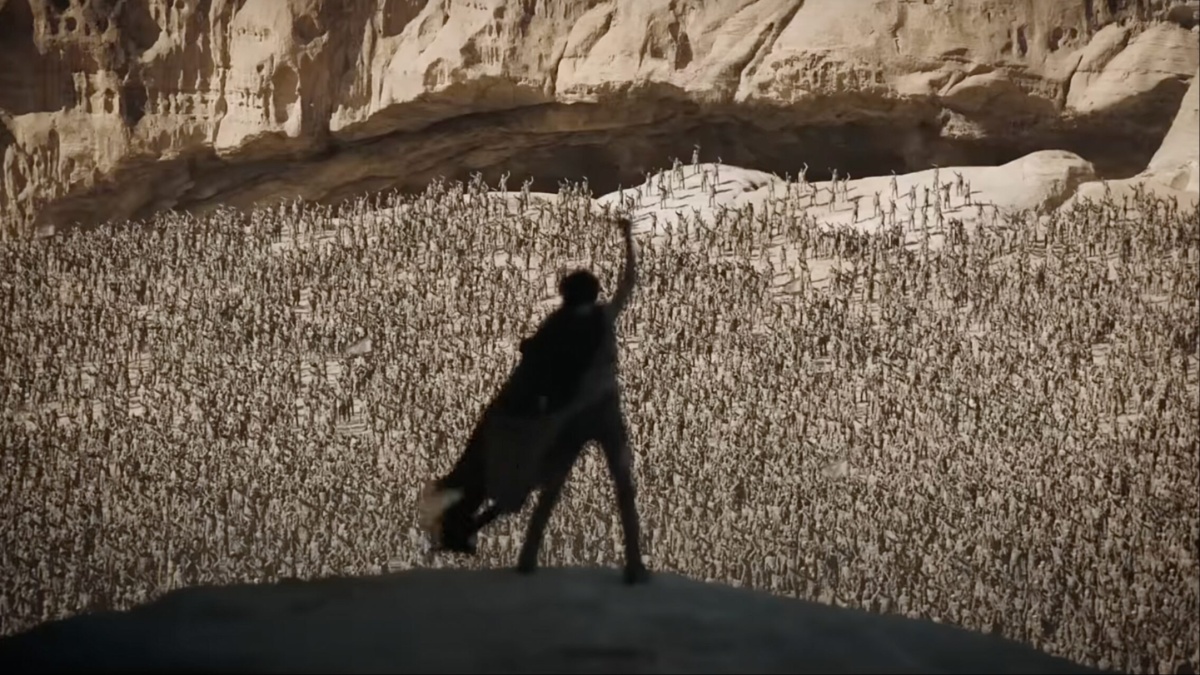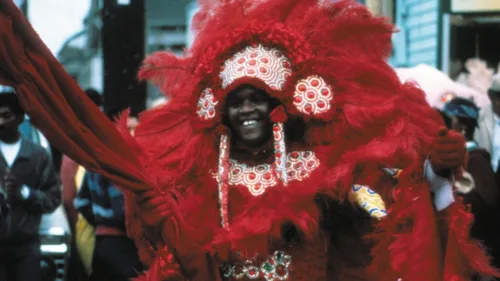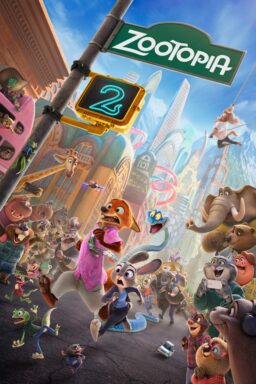I can’t wait to watch both parts of Denis Villeneuve’s “Dune” on the biggest theater screen I can find. I would imagine they’d fit together as perfectly as the first two “Godfather” movies, which they evoke not just in their sepia portraits of corruption, power trips, and generational succession but in their 19th century potboiler-novel attitude toward the characters.
The second chapter of the story (Villeneuve wants to adapt “Dune Messiah” next) is, like the first, rated PG-13. But it plays like an R-rated movie, because of the mythological or epic poem nastiness of the violence (which registers sharply even when they cut away from the worst of it) and—even more so—because it feels genuinely adult in how it creates and presents a world with its own rules and traditions and expects us to translate it into our own experience. There’s no special pleading to convince us that the more expediently ruthless good guys are in fact quite decent and sympathetic compared to their enemies, but rather, more presentable. The most morally evolved character on the Atreides side, Paul’s dad Leto, dies halfway through the first movie, and when he’s characterized here as somebody who ruled from the heart and paid the price, his own son does not disagree.
Technically, the film is stunning, as Villeneuve’s films always are. The production design, lighting and costumes and Greig Fraser’s cinematography were remarkable in the first film, too. The sepia-toned graphic novel Rembrandt look suited the material and made the environment feel suitably exotic or “alien” yet at the same time plausible as a place that could exist. The movie made sure to give the audience lots of close-ups that let you know how the still suits and ornithopters and sandworm-summoning “thumpers” and other devices worked. You believed they could do what the script said they could do. And you got the gist of what was happening whenever there were technical problems that prevented them from functioning (as in the escape into the desert, when the film shows us exactly how an excess of sand wreaks havoc with the ornithopter’s wings and vents).
Like “2001,” the original “Star Wars” trilogy, and Ridley Scott and James Cameron’s science fiction filmography, you feel as if you’re in a real world rather than a figurative one, a place where people sweat and need to eat, machines have to be properly maintained or they’ll break down, and blood and guts and slime and pollution are shocking. Physicality is all. Villeneuve and Frasier even improve upon the first movie’s long-lens digital photography, which almost always anchored the shots in a specific, even map-able perspective. We watched a sandworm swallow up a harvester from inside the cargo bay of a hover-transport. During the ground battles, we raced along with the soldiers and felt the looming presence of the giant vehicles and machines that made them seem as tiny as aphids. We often felt as if we were watching news coverage of the war on Arrakis, or maybe internal video records from a spice-mining corporation. The second “Dune” goes all-in on the “you are there” aesthetic. There are, by my count, maybe two dozen shots in the film that feel like traditional movie sci-fi, and the rest seem like records of an actual thing that happened somewhere.
As Michael Corleone puts it in the first “Godfather” film, his face swollen after being punched in the face by the corrupt Captain McCluskey: “Where does it say that you can’t kill a cop?” This sequel, even more so than the first “Dune,” is the closest cinema has gotten to “The Godfather in Space,” something that many films and TV series made after the David Lynch “Dune” have attempted. You have to reconcile the contradictions and contextualize the various hypocrisies and self-serving ethical exemptions just as you do when reading the Old Testament or “The Iliad” or watching the Corleones in action.
Like the other adaptations of “Dune,” this new one can’t do much with the exotic mix-and-match appropriation of Middle Eastern traditions, language and religious concepts except keep them, since the story wouldn’t be “Dune” without them. But it does seem to consciously lean into it a bit more in the second chapter, perhaps by way of provocation and complication, while maintaining plausible deniability about what it might be up to.
The movie casts the more radical tribespeople on Arrakis with darker-skinned actors and foregrounds the fact that they’re from “the South” of the planet, but it also includes quite a bit of dialogue skeptically debating whether Paul is a messiah or if he’s just cannily modeling himself on the prophecy. Paul and his mom are definitely coded as “white” though, whatever that means ten thousand years into humanity’s future. Javier Bardem’s Stilgar, a man of the people, is also a representative of the presumably more credulous and conciliatory Northern Arrakis and is often held up for ridicule or at least criticism by characters like Zendaya’s Chani. Bardem plays Stilgar with hilariously unselfconscious gusto. He desperately wants something to believe in and is borderline pathetic in his eagerness to convert everyone else within earshot. The character is as much of a hype man for the teenage would-be Che Guevara of Arrakis as George Kennedy was for Paul Newman’s chain-gang Jesus in “Cool Hand Luke.”
The film is a bottomless galactic gumbo-pot of cultural and ethnic allusions and metaphors that sometimes creates dissonant or allergy-provoking reactions but at least seems like a deliberately constructed thing that’s meant to be argued about, or decoded, rather than digested without thought or objection. This “Dune” goes difficult places with a spring in its step. The result is far more compelling than a hypothetical version that tried to make Frank Herbert’s novel “modern” by superimposing 21st century North American college liberal attitudes onto it and making sure that we know that when the characters we’re supposed to identify with do objectively horrifying things, it’s because they had no other choice, and we’re not bad people if we get a thrill from watching them slit throats and blow things up. There is also an enhanced sense that things are happening in the in-between spaces of existence, on other planes or maybe inside of individual souls, that cannot be explained or quantified, but can be channeled. Spend a few hours in this world and it makes the “Dune”-inspired elements in “Star Wars” seem quite tame.
The Force is a thing that can be mastered, but the supernatural or paranormal parts of “Dune” are startling in their ferocity and unknowability. The characters crack open doors to somewhere else, and what they see and feel transforms them.












